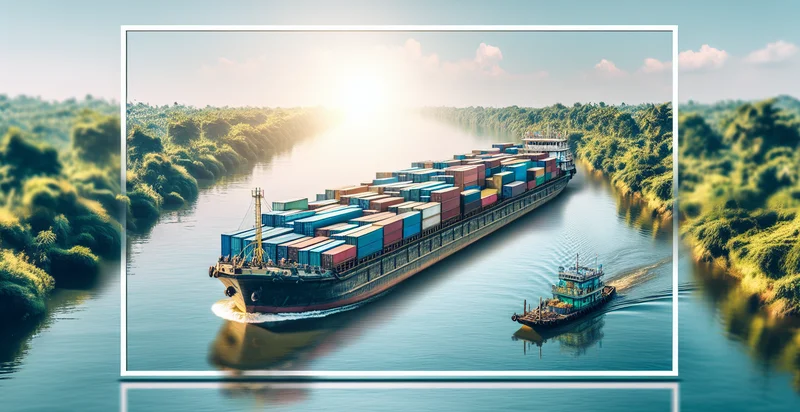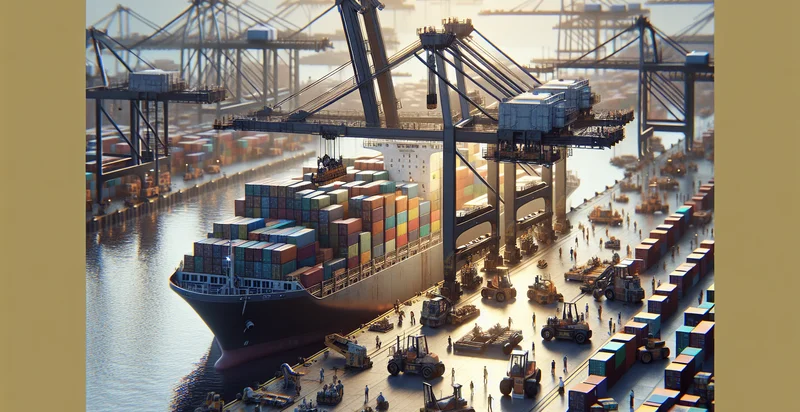Identify if barge is loaded
using AI
Below is a free classifier to identify if barge is loaded. Just upload your image, and our AI will predict if the barge is loaded - in just seconds.

Contact us for API access
Or, use Nyckel to build highly-accurate custom classifiers in just minutes. No PhD required.
Get started
import nyckel
credentials = nyckel.Credentials("YOUR_CLIENT_ID", "YOUR_CLIENT_SECRET")
nyckel.invoke("if-barge-is-loaded", "your_image_url", credentials)
fetch('https://www.nyckel.com/v1/functions/if-barge-is-loaded/invoke', {
method: 'POST',
headers: {
'Authorization': 'Bearer ' + 'YOUR_BEARER_TOKEN',
'Content-Type': 'application/json',
},
body: JSON.stringify(
{"data": "your_image_url"}
)
})
.then(response => response.json())
.then(data => console.log(data));
curl -X POST \
-H "Content-Type: application/json" \
-H "Authorization: Bearer YOUR_BEARER_TOKEN" \
-d '{"data": "your_image_url"}' \
https://www.nyckel.com/v1/functions/if-barge-is-loaded/invoke
How this classifier works
To start, upload your image. Our AI tool will then predict if the barge is loaded.
This pretrained image model uses a Nyckel-created dataset and has 2 labels, including Barge Empty and Barge Loaded.
We'll also show a confidence score (the higher the number, the more confident the AI model is around if the barge is loaded).
Whether you're just curious or building if barge is loaded detection into your application, we hope our classifier proves helpful.
Related Classifiers
Need to identify if barge is loaded at scale?
Get API or Zapier access to this classifier for free. It's perfect for:
- Cargo Management Optimization: The 'if barge is loaded' identifier can be used to streamline cargo management processes by automatically assessing the loading status of a barge. This information enables companies to plan subsequent logistics more efficiently, ensuring timely departures and minimizing idle time.
- Status Reporting for Stakeholders: The function can facilitate real-time status reporting for various stakeholders including shipping companies, port authorities, and clients. By providing up-to-date information on whether a barge is loaded, all parties can maintain better communication and make informed decisions.
- Safety Compliance Monitoring: This identifier can enhance safety compliance efforts by ensuring that barges are only operated when loaded as per regulatory requirements. An automated system that signals when a barge is loaded can significantly reduce the risk of accidents caused by improper loading practices.
- Operational Cost Reduction: Utilizing the 'if barge is loaded' identifier can help in optimizing operational costs by eliminating unnecessary trips or maneuvers of empty barges. This leads to reduced fuel consumption and lower overall expenditure related to maritime logistics.
- Predictive Maintenance Planning: The function can contribute to predictive maintenance strategies by signaling when a barge remains in a loaded state for an extended period. Understanding the loading patterns can aid in scheduling necessary maintenance, thus prolonging the life of the vessel.
- Inventory Management for Cargo Owners: Cargo owners can leverage the identifier to better manage their inventory levels based on the loading status of barges. This capability allows for more precise tracking and resource allocation, preventing overstocking or delays in delivery.
- Integration with Automated Systems: The 'if barge is loaded' identifier can be integrated into broader automated systems such as supply chain management or fleet tracking solutions. This integration can enhance operational visibility and efficiency by synchronizing various components of the logistics process, from loading to final delivery.


